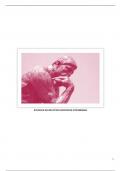Summary
Samenvatting - Ethische en rechtsfilosofische stromingen
- Course
- Institution
Gegarandeerd geslaagd! Dit document omvat een volledige samenvatting van het vak ethische en rechtsfilosofische stromingen, gegeven in het eerste jaar van Rechten.
[Show more]



